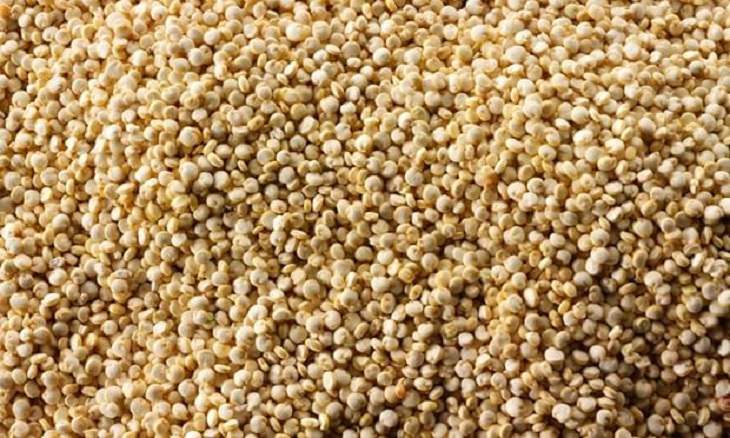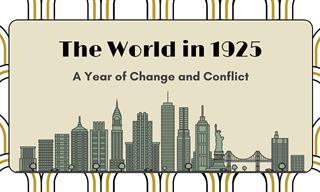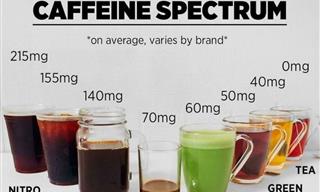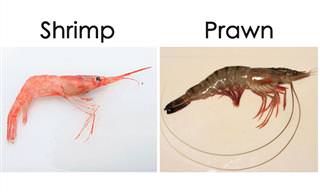
In July 2017, a Whole Foods Store in New York’s Harlem decided to stock bags of fonio, a West African grain that is similar to couscous. Their first shipment sold out in a matter of hours.
Just last week, Los Angeles Lakers forward Luol Deng hosted a fonio party at his house. It is quite literally the hottest grain on the market that you have never eaten.
Noah Levine, the chief marketing officer at Yolélé Foods, a company that is attempting to create the first global supply chain for this grain, says that “We’re ready for fonio to go to the next level.” However, it’s a bit of a challenge. At the moment, fonio is grown throughout rural Senegal and other impoverished pockets of Africa’s Sahel region – a sub-Saharan stripe that stretches from the Atlantic Ocean to the Red Sea.

Yolélé’s product is only currently available in two specialty shops in Brooklyn, New York and Los Angeles.
The grains resurgence really couldn’t come at a better time for the fraught region. Most of the Sahel coastline – where the population is booming – is on the front lines of climate departure – the inflection point at which a place’s average temperature of its coolest year after 2005 becomes hotter than the historic average temperature of its hottest year since 1860.
“With climate departure comes an increase in climate variability,” says Christopher Field, the director of Stanford’s Woods Institute for the Environment. “In environments that are very climate-dependent, crops that produce even in bad years are going to matter more.”
Laos, Nigeria, Africa’s largest city, is on course to reach climate departure by 2029. Cape Town is scheduled to run out of water by June and hit its climate departure in 2038. Given the current climate, fonio could be the difference between feast and famine in this region.
Yolélé is trying to establish the world’s first fonio factory in Dakar, with the goal of providing an economic boost to the locals, many of whom risk their lives taking torturous paths of illicit migration across the Sahara and Mediterranean.
However, even in the 21st century, fonio industrialization is a tough feat. Sanoussi Diakite, an inventor from Senegal, created a machine for husking the grain 22 years ago. The problems clearly extend beyond manufacturing difficulties.

Stephen Wood, an ecologist with a master’s degree in economics who has studied the grain for a decade, says that, “I’m a super-fan of fonio. I’m just not a super-fan of the idea that it’s a cure-all. People don’t want to farm. They want to move to cities. Fonio isn’t going to change that.”
This grain is exceptionally light, so you need to eat more of it to feel full. Local diets are also lacking in meat and vegetables, not just grain.
Finally, there is a colonial mentality that we have to try and overcome. There’s a tendency “to look down at our own products and to see crops like fonio simply as country people’s food – therefore substandard,” said Pierre Thiam, an expert on African cuisine and Yolélé’s co-founder.
In fact, it’s easier to find a wheat baguette in the streets of Dakar than a croissant made from fonio, even though Senegal has never traditionally produced wheat.
Gluten-free, with four times the protein, three times the fiber and nearly twice the iron of brown rice, as well as a low glycemic index, fonio is undoubtedly a super grain. It doesn’t need much water to survive, can be harvested three times a year, and its extensive root system helps in the fight against soil erosion. In Levine’s eyes, fonio is the cure to hunger, drought, poverty, and the global migrant crisis.
The population of this part of Africa is expected to double by 2050. Is fonio going to feed all of these people? No, it isn’t. Can it end their poverty so they can live more like we do? Absolutely.
Source: sciencealert
Images: depositphotos

This Collection of Baking Charts is a Terrific Resource
Baking doesn't have to be difficult or complicated - all you need to do is follow the 8 fantastic charts that we've compiled in this post.

Delicious Anti-Cancer Broccoli Soup Can Be Made at Home
This creamy broccoli soup is not only delicious, but it also has cancer-fighting properties. Follow this recipe to learn how to make this tasty dish.

Grill a Flawless Chicken Every time With These Tips
A full troubleshooting guide for your next grilled chicken. No more frustration, but a lot of preparation!

11 Simple Health Hacks to Change Your Life for the Better
To get healthy quick, all we need to do is follow these instant health upgrades. Take a look!

Why Settle For Regular Toast When You Can Make THESE?
Change things up a bit with 17 original and delicious pieces of toast!

Does Our Stomach SHRINK When We Eat Less? Our Answer
Eat less, and your stomach will shrink over time.. is that the truth?

In the 1800s, They Thought We'd Be Living Like This Today?
The European artists who created the postcards below were asked to predict what life would be like in 2000.
 13:08
13:08
Watch the Great City of Chicago as it Was in the 1930s...
A rare and vivid window into the daily life, fashion, and architecture of Chicago during a defining decade in American history.

Impress Your Friends With These Quirky Latin Phrases
Make yourself look wiser and more romantic by using these ten Latin phrases on a daily basis.

These Fun Infographics Will Pique Your Interest!
Become more knowledgeable and more powerful today without boredom. Check out these fascinating maps and infographics!

Welcome the Summer Season with These Beautiful Quotes
Welcome the balmy summer season with these beautiful warm-weather quotes.

Facts from History You’ve Likely Never Heard Before
If you’re someone who loves uncovering the lesser-known corners of the past, you’ll find something special here.

1925: World Events That Made the News a Century Ago
Let's jump back in time and revisit the major events that captured the world's attention exactly a hundred years ago.

There’s a Visual Guide For Everything You Can Think Of!
Browsing through visual guides and maps like these is one of the easiest, funnest, and quickest ways to fill those knowledge gaps and learn something new!

14 Old Photos That Show Just How Hard Life Once Was
Remember when doing even the basic tasks took hours? These photos do.
 5:58
5:58
15 Historical Photos with a Fascinating Backstory
What story do these 15 photos have to tell? Turns out, quite a lot of stories...

8 Hilarious Malapropisms by Famous Figures
Everyone, from politicians to celebrities, had a language slip-up at least once...

Meet 10 Teachers Who Made Our World a Better Place
Without the right teacher, educating children and adults alike would be close to impossible, so here's a list of 10 teachers who changed the world!

23 Unbelievable Facts That Show Our World’s Bizarre Side
These incredible facts will change how you see the world.

Experience the Dramatic Moments of WWII in Moving Color
This 13-episode television documentary series recounts the major events of World War II in HD color.

6 Short Stories to Help You Stay Motivated in Life
If you’re feeling down, rather than surf the internet for cat pictures or drowning your sorrows by reading junk, check out these inspirational and powerful Short Stories

Early 1900s America Captured in Charming Vintage Photos
These vintage photos capture early 20th-century life in America.
 3:25
3:25
Saxophone Magic: 15 Unforgettable Solos
These renditions of epic sax solos are just perfect.

The Encyclopedia Won’t Tell You These Unique Facts
Here are 12 unique and curious facts about the world that will definitely surprise you.

7 Interventions of Mother Nature That Altered History
We tend to forget how much power nature has over us. These are 7 times extreme weather conditions completely changed the course of history.

8 Mysterious Objects Found By Deep Sea Divers
The oceans are vast and mysterious, and they hide many strange and curious lost objects. Here are 8 such items, unearthed by deep-sea divers.

10 Incredible Autobiographies We Should All Be Reading...
These autobiographies are absolute must-reads for you to enjoy. They are written by some of the world' most famous people, so you should definitely have a read.
 18:27
18:27
What is the Story Behind the Scilian Mafia?
Explore the origins of the Sicilian Mafia, known as Cosa Nostra.

16 Wonderful Japanese Ideas We Should All Start Copying
The Japanese are unique. Their ways seem perfectly designed to help the population live happy fruitful lives. Here are 16 cool Japanese things we should copy.

These Max Shows Will Keep You Glued to Your Screen
Looking for something new to watch? Check out our latest recommendations...

The Astonishing Life and Philosophy of Ludwig Wittgenstein
It is the true story of Ludwig Wittgenstein, the man who sat in the same classroom as Adolf Hitler, became the protégé of the philosopher Bertrand Russell, and changed the face of 20th-century philosophy
 59:00
59:00
The History Behind Halloween Isn't Quite What You Think...
If you've ever wondered what the origin of Halloween is and what all the fuss about pumpkins, fancy dress, and trick-or-treating is all about, then you should definitely give this documentary a watch.
 14:14
14:14
History Lesson: The Armored War Elephants of Ancient India
Elephants in ancient Indian history played a crucial part in warfare. Find out more about their fascinating history...

7 Accidental Finds That Made People Extremely Rich
The luck that you need in life can be waiting for you anywhere - these seven people prove that!

These Crazy Pawn Shop Stories Will Have You in Stitches
Check out these weird and hilarious stories that pawn shop workers have encountered over the years.

Expand Your Knowledge with These Intriguing Facts
They say those who keep learning stay young. So if you're a keen learner, check out these fascinating facts about history, nature, and a variety of other topics!

This Dog Saved Her Owner From Certain Death!
This dog proved her love for her owner in an amazing way: she used her incredible sixth sense to help save the woman's life.

20 Things Most People Think Are the Same, But Aren't!
These words are often mistaken for synonyms, but in reality they are nothing of the sort, because they refer to different things. Learn about 20 of them.,
 12:52
12:52
Common Misconceptions About the Roman Empire
Not everything we hear and read about the Ancient Roman Empire is true, you know... These facts, for example, turned out to be pure fiction!
 2:45
2:45
The Evolution of Wedding Cakes Over the Past Century
Like anything else, the aesthetic of weddings is subject to fashion and change. And what better way to showcase this fashion than through wedding cakes?

17 Terrific Charts to Expand Your General Knowledge
We have a treat for all lifelong learners. It’s a list of 17 charts that will enrich your knowledge in geography, nutrition, linguistics & anything in-between!

How Much Influence Do Secret Societies Have? Find Out Here
Learn all about six of the most famous secret societies that seem to have quite a degree of influence even today.
 21:24
21:24
True Crime Story: The Shotgun Booby-Trap
The case of Bertha Briney and the house that was booby trapped with a shotgun...

Where Did These Common Sayings Come From? Fascinating!
You're probably aware of these common sayings, but where did they originate from? Fascinating!

12 Crash Course Videos That Will Expand Your Horizons
Quarantine is an opportunity to learn something new! Check out this well-made series of videos that cover almost any topic you can think of!
 4:13
4:13
This is What Happened to the Man Who Didn't Salute Hitler!
Nearly eight decades have passed since a camera captured the moment a man refused to give Hitler a Nazi salute. Here's what happened to him.

These Beauty Practices of the Past Look Strange Today…
17 fascinating photos of beauty procedures, treatments, and practices from the first half of the 20th century that look strange and curious today
To enable your Ad-Free Subscription, please fill the fields below
Your subscription was successful, now you can enjoy an ad-free experience!! Note: To make sure you get no ads, please make sure to log in to your account. If you are logged in already, then refresh the page. The subscription can be cancelled at any time.


